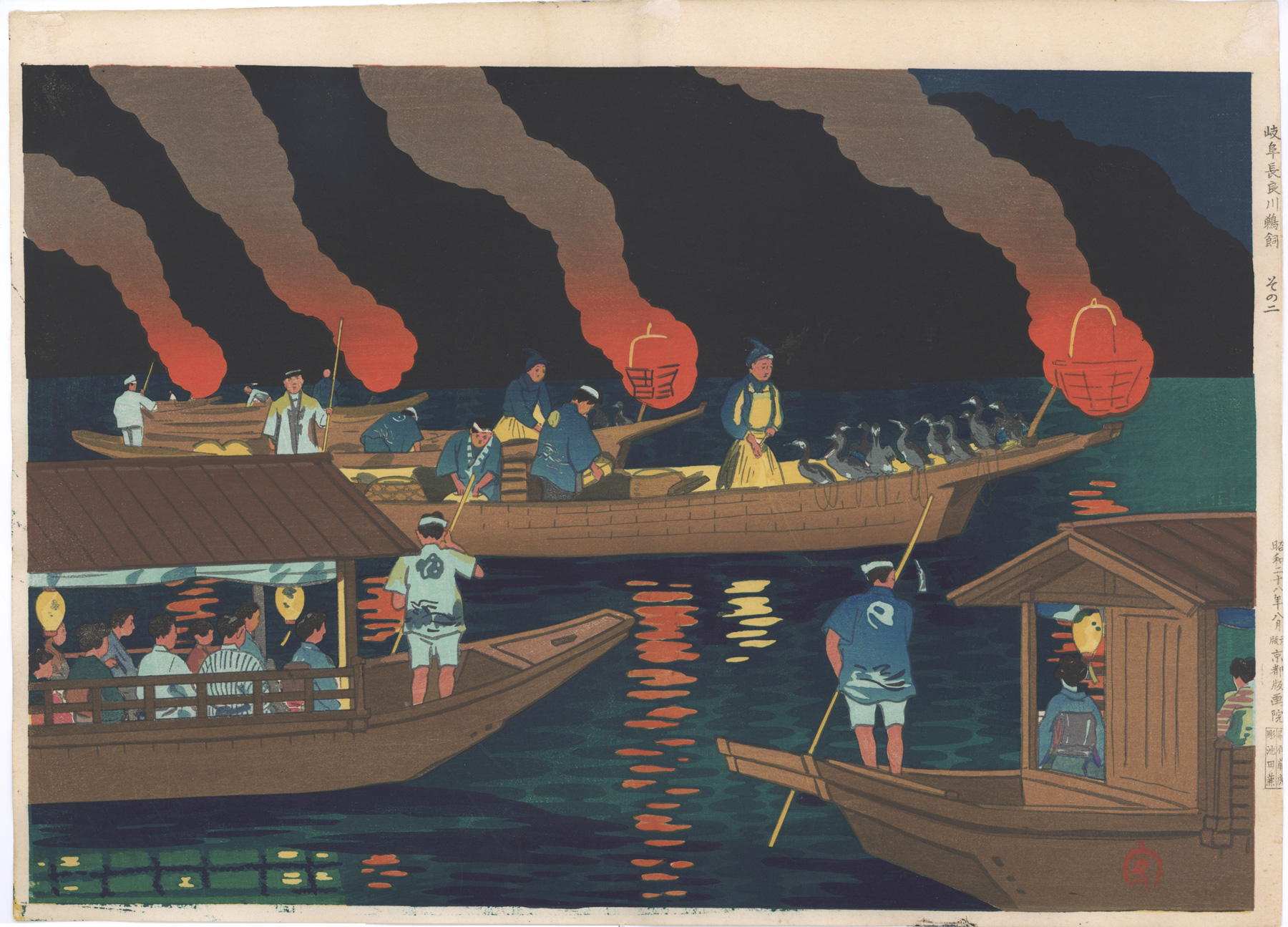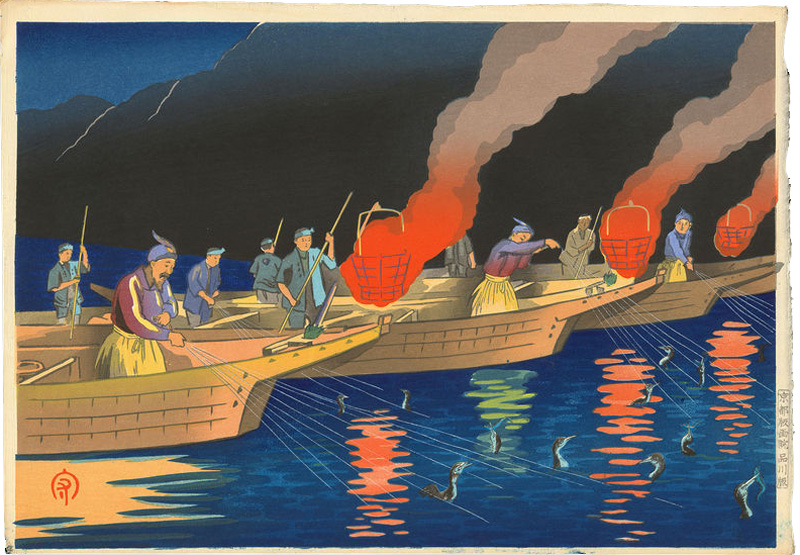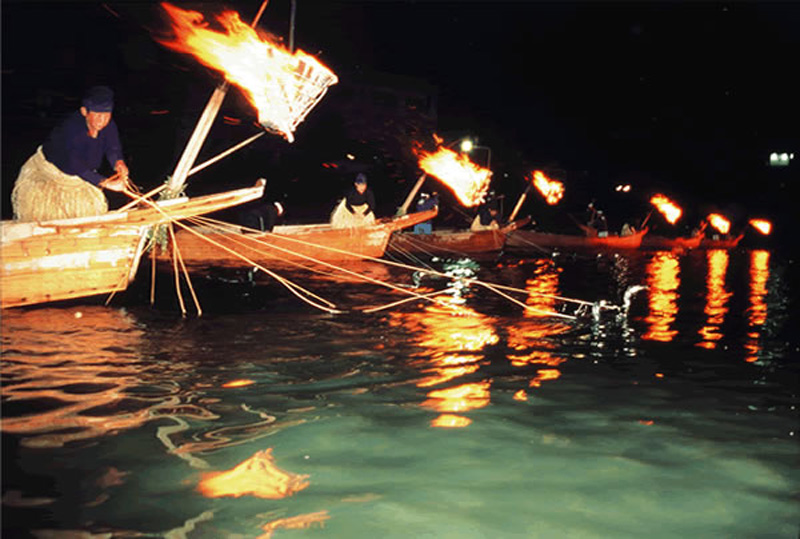About This Print
This ancient art has been practiced along the Nagara River in Gifu for more than 1,300 years. It has a very long history in Japan and is mentioned in many ancient chronicles. The samurai warlord, Oda Nobunaga took the ukai fisherman under his patronage and created the official position and title of usho (Cormorant Fishing Master). The shogun, Tokugawa Ieyasu enjoyed watching ukai when he visited Gifu City and also gave his patronage and protection to the art. He was so fond of the sweet fish that he had it delivered to Edo Castle in modern day Tokyo. The haiku poet, Matsuo Basho famously wrote a haiku about ukai when he visited Gifu to watch the cormorant fishing: “Exciting to see / but soon after, comes sadness / the cormorant boats”.
Today, the usho fishing masters are the official Imperial fisherman of the emperor of Japan, with the sweet fish sent to the Imperial family several times a year.
Print Details
| IHL Catalog | #1513 |
| Title | Cormorant Fishing on the Nagara River in Gifu Prefecture Scene 2 |
| Series | |
| Artist | Hiyoshi Mamoru (1885-?) |
| Signature | not signed |
| Seal |  |
| Date |  昭和二十八年八月 Showa 23rd year, 8th month |
| Edition | later edition; first editions are marked and are dated to 1951 |
| Publisher |  |
| Carver |  |
| Printer | 刷 伊藤虎 suri Itō Tora [Itō Toraji] |
| Impression | excellent |
| Colors | excellent |
| Condition | good - light overall toning; printers mark lower left margin; three tape remnants from previous mounting top margin; slightly trimmed right margin |
| Genre | shin hanga |
| Miscellaneous | |
| Format | oban yoko-e |
| H x W Paper | 11 3/8 x 16 in. (28.9 x 40.6 cm) |
| H x W Image | 9 3/8 x 14 1/4 in. (23.8 x 36.2 cm) |
| Collections This Print | |
| Reference Literature |




